Armenian Heritage at Mount Auburn
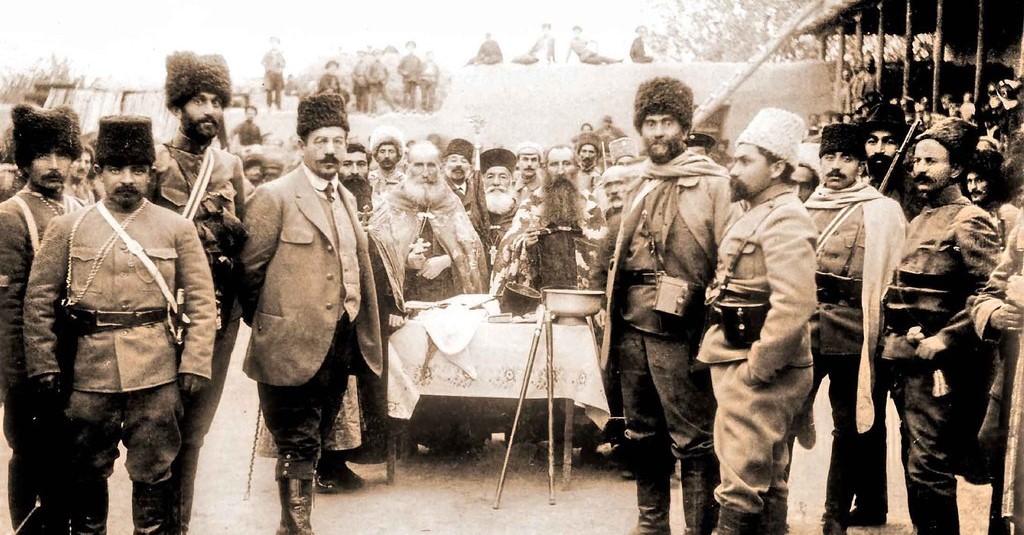
Exploring Armenian American culture and history in Mount Auburn's Landscape.
Thousands of Boston-area Armenians chose, and continue to choose, Mount Auburn Cemetery as their final resting place, from early merchants such as Simon Antranighian, the first Armenian to be buried here, to refugees from the Ottoman massacres and genocide, to their contemporary descendants.
In 2025, Governor of Massachusetts, Maura Healey declared April to be Armenian American Heritage Month.
Armenian-Americans have made significant contributions to the cultural, social, and economic fabric of Massachusetts, enriching the state with their traditions, values, and entrepreneurial spirit.
Maura Healey, 2025 Armenian American Heritage Month Proclamation
Memorializing Local Heritage: A Monument for Mount Auburn’s First Armenian Resident
In 1853, a twenty-six-year-old named Simon Antranighian arrived in Boston on the clipper ship Sultana from Smyrna (Izmir), Turkey. When he applied for U.S. citizenship the following spring, he stated that he was an “Artist,” born in Constantinople (Istanbul), Turkey, in 1827. Probate records suggest that Antranighian worked as a daguerreotypist (an early type of photographer) and a waiter in what is now Boston’s South Bay.
According to his death record, Antranighian died on March 15, 1855, just 470 days after his arrival. His cause of death was listed as “Infl. of lungs,” which could have been one of several respiratory diseases – including tuberculosis and pneumonia – that were common killers in 19th-century cities.
Antranighian was interred in the public St. John Lot on Vesper Avenue in an unmarked grave. He was the first known Armenian to be buried at Mount Auburn – but not the last. More than 3,000 Armenians have been buried here since.
“Simon Antranighian, in his short life, was a pioneer and deserves to be remembered.”
Marc A. Mamigonian, National Association for Armenian Studies and Research
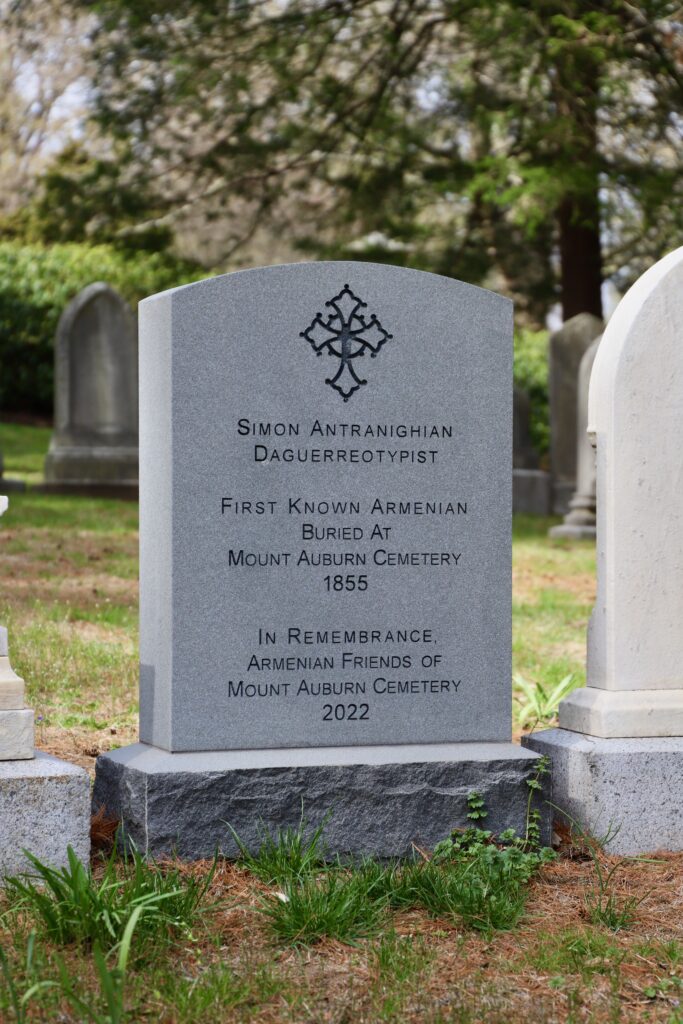
In 2016, a group of local Armenian culture advocates, including members of Project SAVE Armenian Photograph Archives, the National Association of Armenian Studies and Research, and Mount Auburn Cemetery’s volunteers, began an effort to create a monument for the unmarked grave of Simon Antranighian (1827-1855) – the first known Armenian buried at Mount Auburn.
They enlisted Robert Shure, sculptor and President of Skylight Studios in Woburn, to design a monument appropriate for Antranighian’s gravesite.
Watertown and Belmont, Massachusetts: An Armenian Cultural Hub
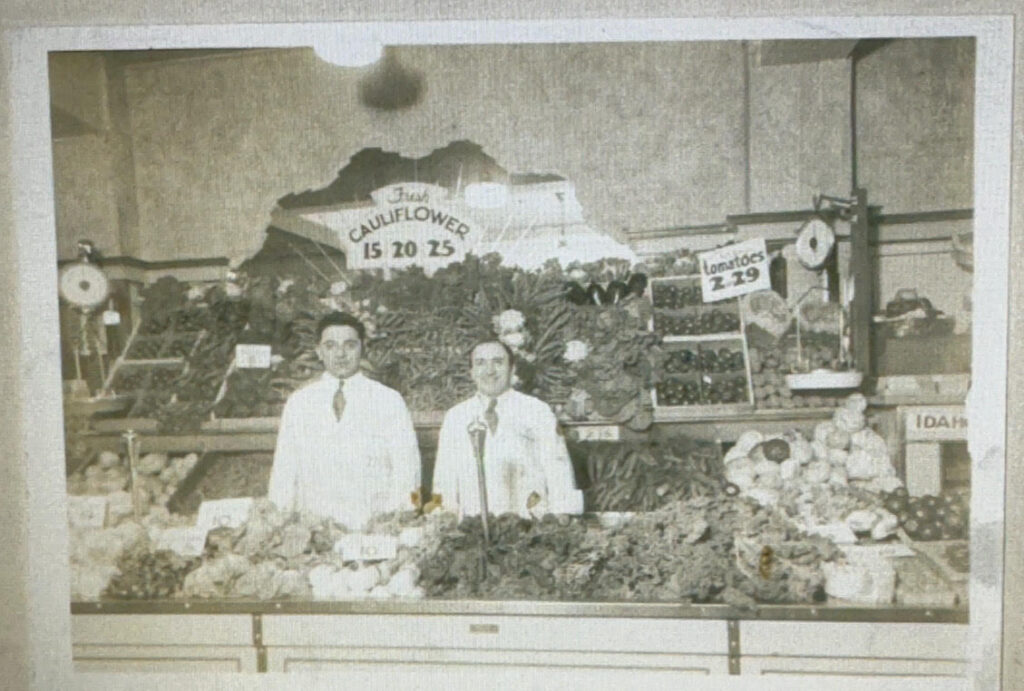
Watertown has been a pivotal destination for Armenian immigrants in Massachusetts ever since the Hood Rubber factory opened its doors in 1896 and offered economic opportunity to new immigrants. This industrial milestone coincided with an era of massive migration, as Armenians fled the brutal massacres of the 1890s and established strong roots in East Watertown. In the years following the genocide, the community expanded further; by 1930, Armenians comprised nearly one in every ten residents.
Over time, Watertown evolved into a vibrant hub of Armenian culture and heritage. Even as later generations moved to surrounding suburban areas, the legacy of those early settlers continue to resonate in the town. According to the 2020 U.S. Census, the state is home to roughly 30,000 Armenian Americans, with the highest concentration found in the Greater Boston area.
Today, Watertown remains at the heart of the Armenian American community in Massachusetts—a community reflected in the memorials and histories preserved at sites such as Mount Auburn Cemetery.
Movers and Shakers
The trailblazing and entrepreneurial spirit of Armenian Americans is present throughout Mount Auburn's landscape. Their innovations and thoughtful approach to problem-solving have shaped communities and industries alike. These leaders in their fields exemplify the dynamic drive and determination that continues to inspire future generations.
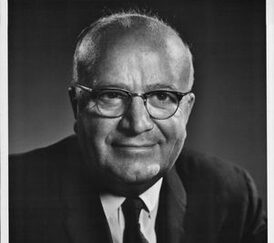
Stephen P. Mugar (1901-1982)
Founder of Star Market and philanthropist.
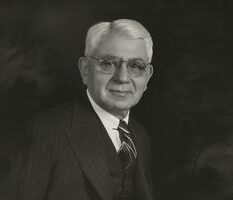
Varaztad Kazanjian (1879-1974)
Founder of modern plastic surgery.
Buried on Western Ave. in lot 6781
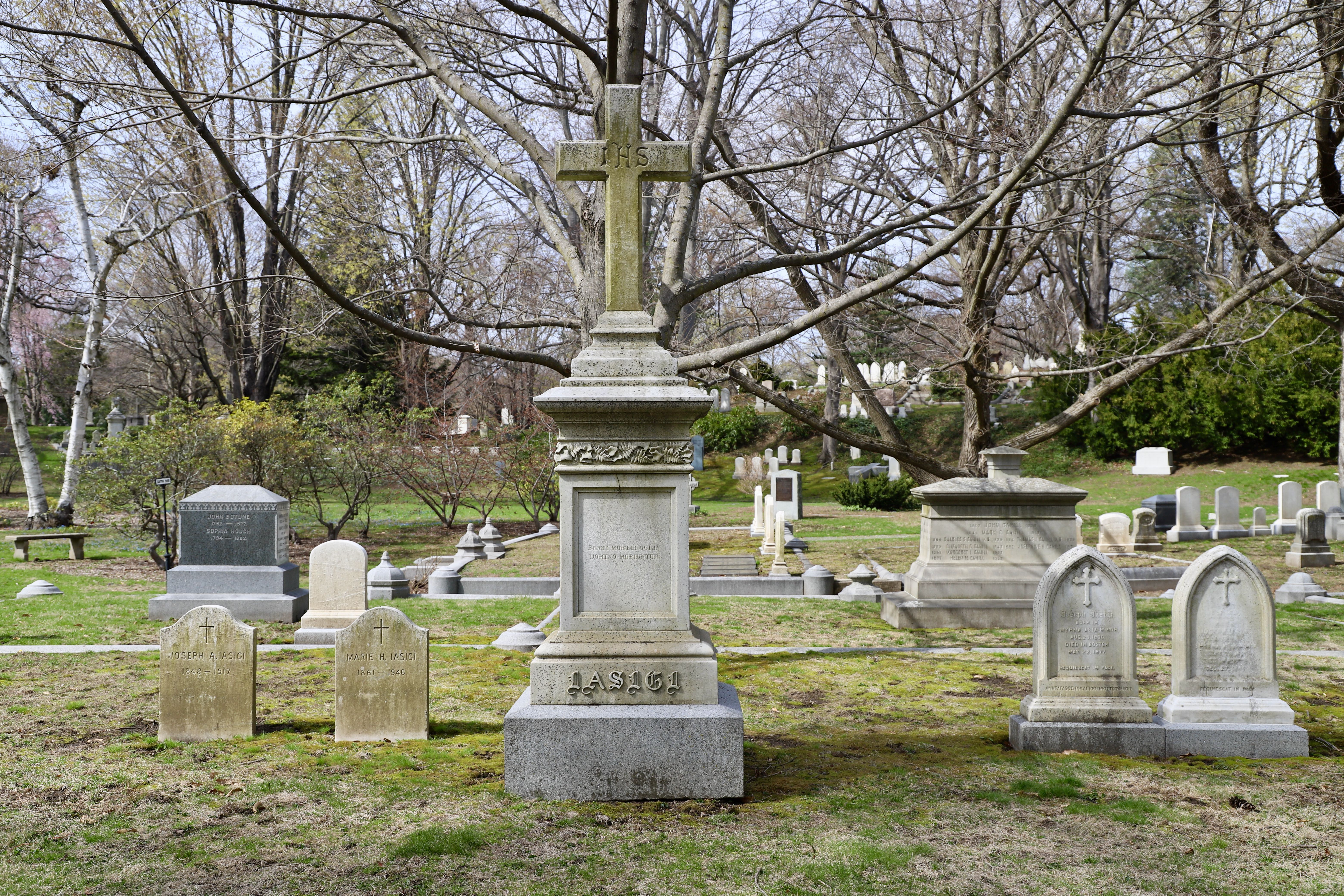
Joseph Iasigi (1800-1877)
Merchant Shipowner
Buried on Mound Ave. in lot 3654
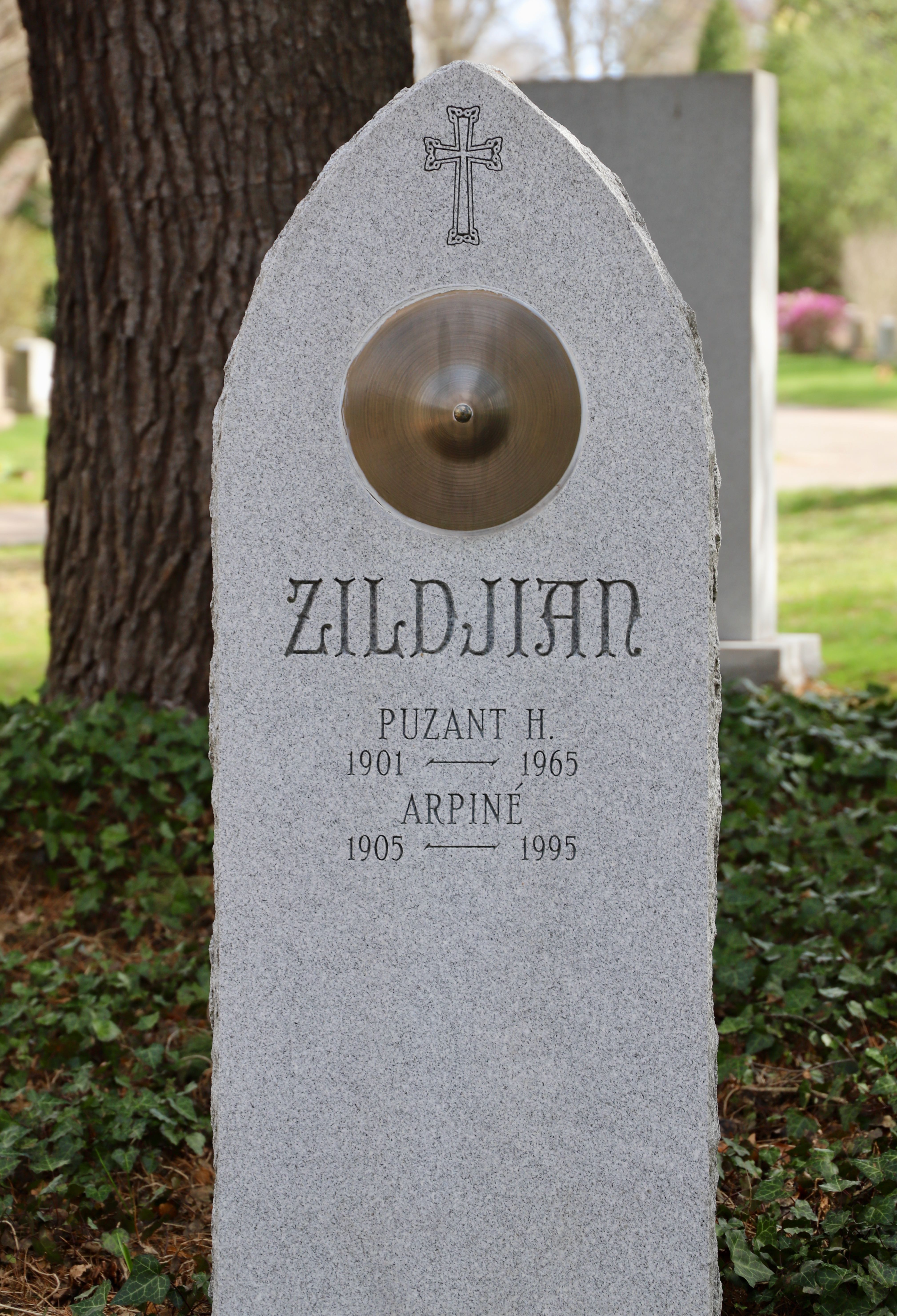
Puzant Zildjian (1896-1965)
Cymbal manufacturer and co-founder of A. Zildjian & Co.
Buried on Dogwood Path in lot 9376.
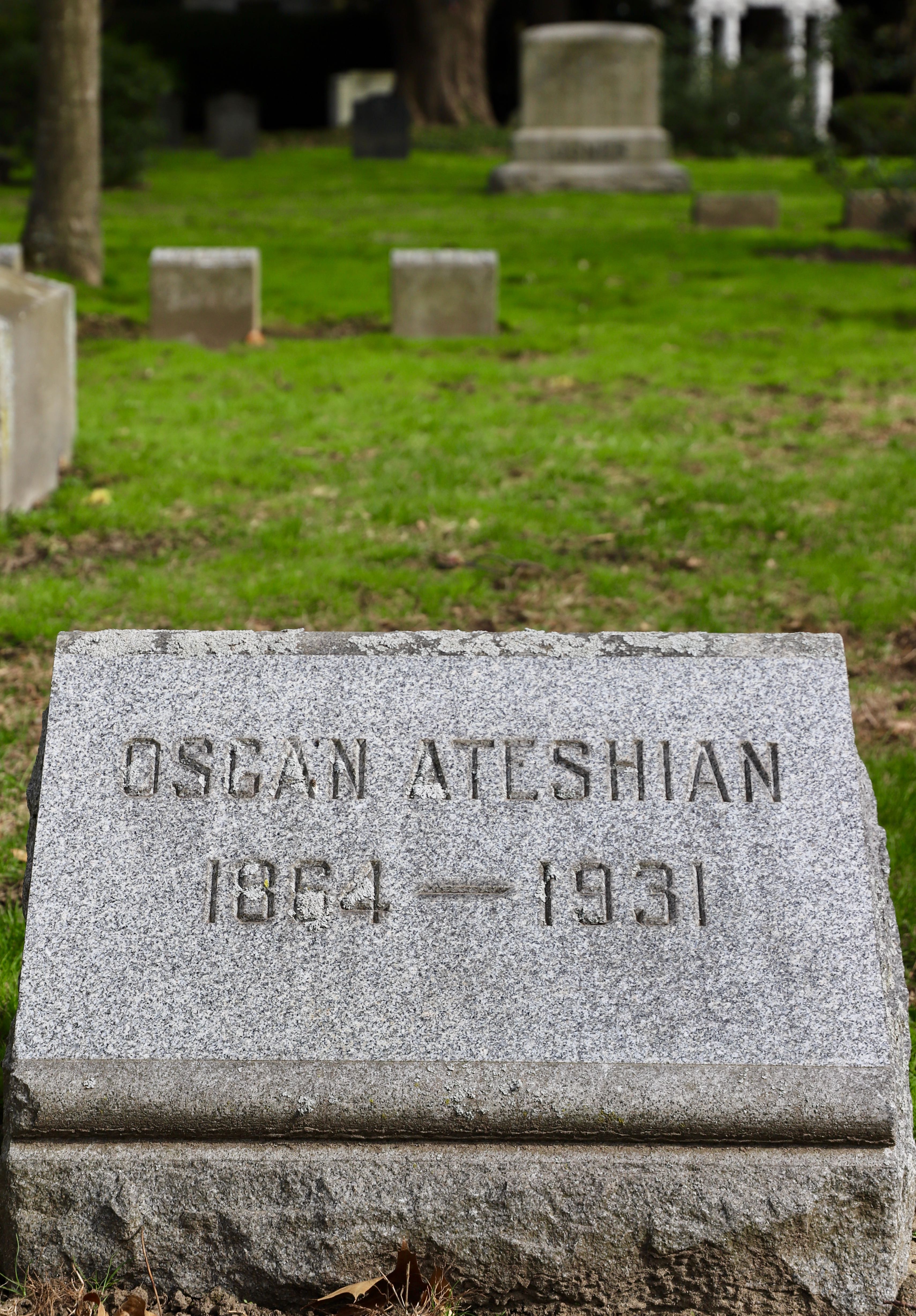
Osgan Ateshian (1864-1931)
Rug merchant and stock broker.
Buried on Beryl Path in lot 5885.

Gladys Tashjian (1925-1983)
Executive Secretary for the Watertown Chamber of Commerce and the Watertown Superintendent of Schools.
Buried on Field Road in lot 9828
Armenian Veterans
We pay tribute to the courage and sacrifice of those Armenians who fought for their homeland. Set against the upheaval of World War I, the Ottoman Empire, under the Young Turk Committee of Union and Progress, forged a military pact with Germany on August 2, 1914, and formally joined the Central Powers on November 11. The wartime alliance and ensuing chaos in the Near East and Russian Caucasus provided the cover the Young Turk regime needed to pursue its nationalist objectives, resulting in the Armenian Genocide.
Here we honor Drastamat Kanayan (General Dro), the storied World War I commander and revered Armenian national hero, alongside fellow WWI veterans and even a Purple Heart recipient whose wounds speak to their valor. Their dedication and resilience embody the unbreakable spirit of the Armenian community at home and abroad.
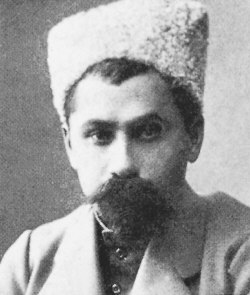
Drastamat Kanayan (General Dro) (1884 – 1956)
WWI military general and Armenian national hero.
Buried on Story Road in lot 8730.
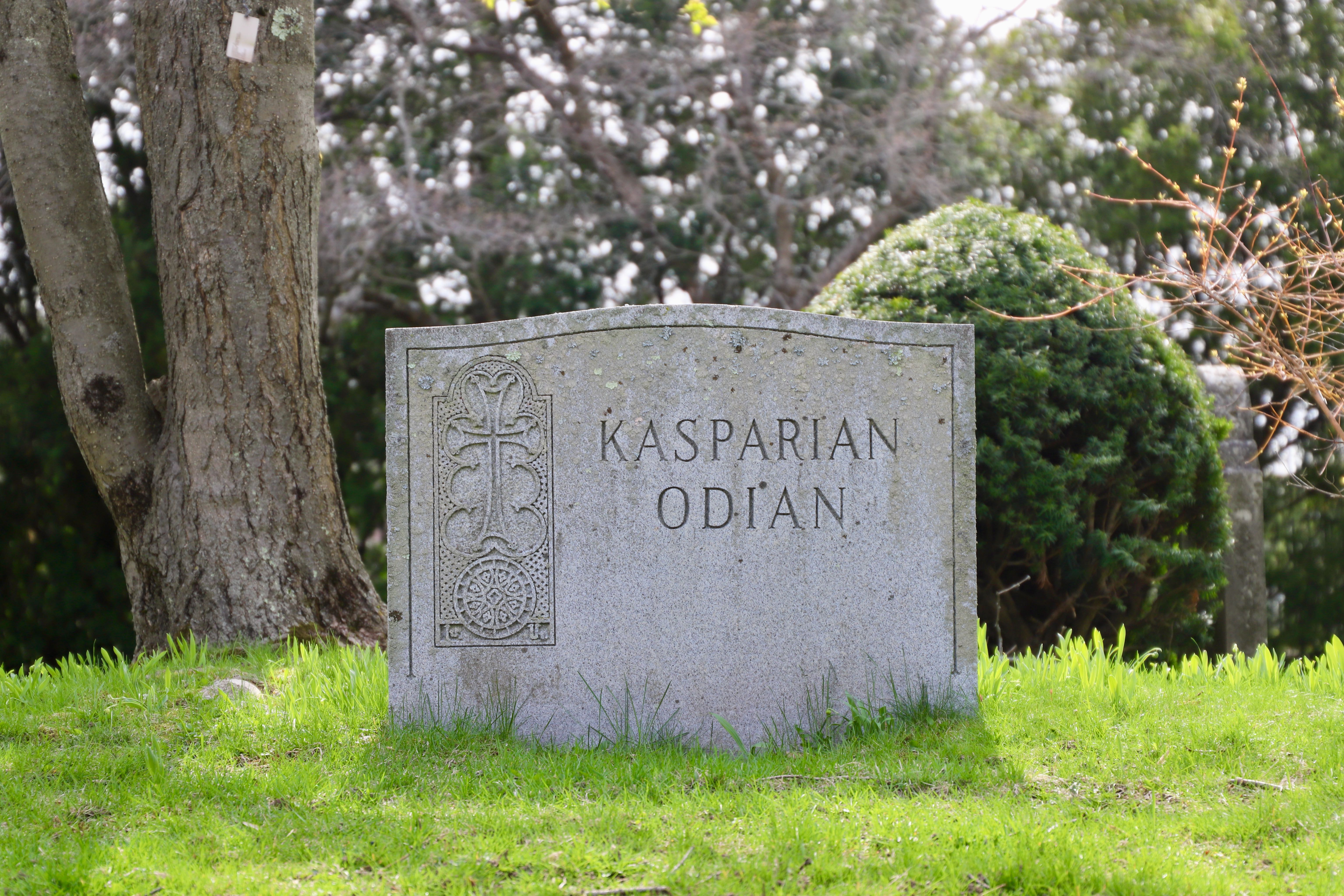
Koren Der Kasparian (1893 – 1975)
WWI American Expeditionary Force (wounded) and printer U. S. Mint.
Buried on Story Road in lot 8586.
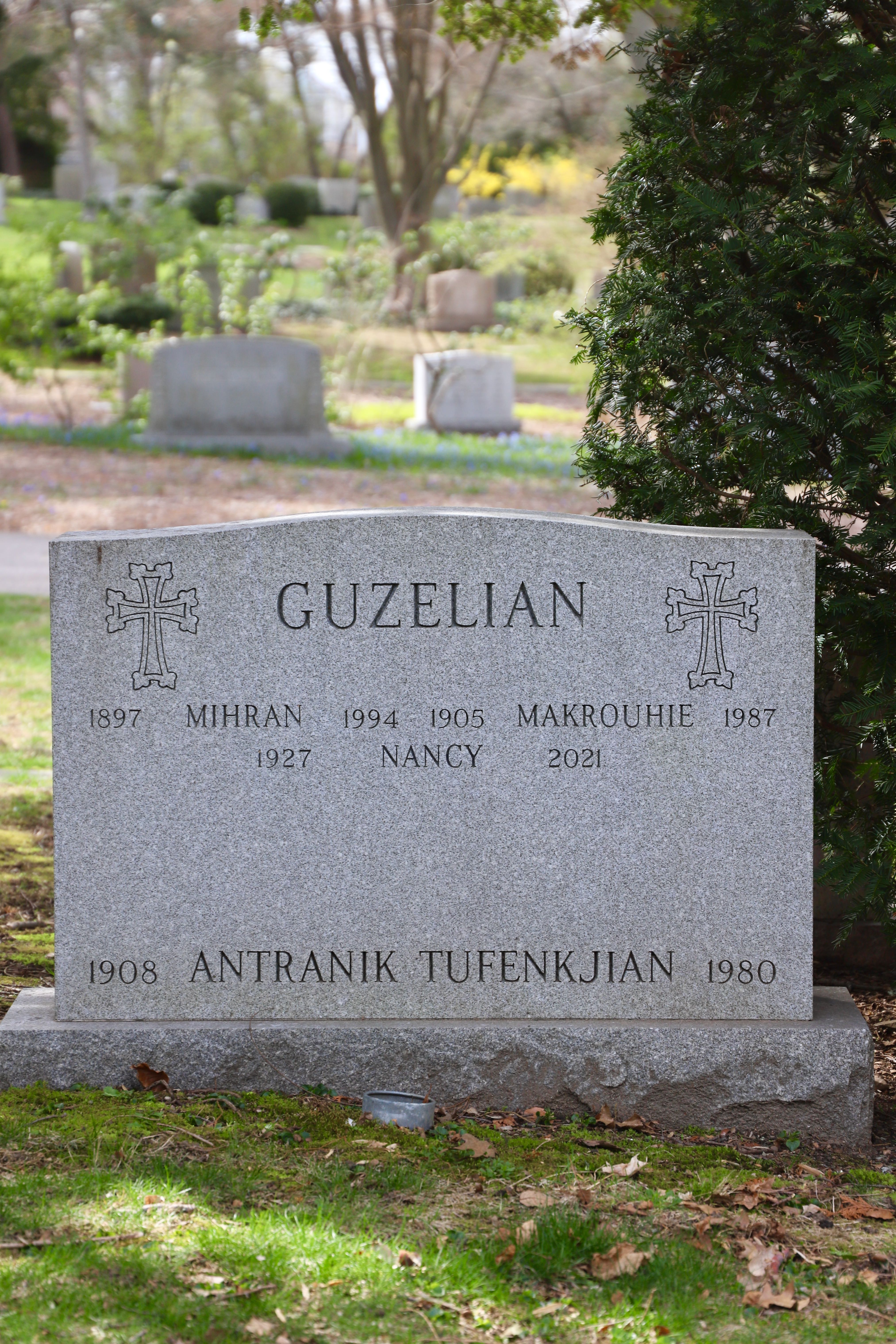
Mihran Manoog Guzelian (1897 – 1994)
WWI Armenian Legion and confectioner.
Buried on Aronia Path in lot 10138.
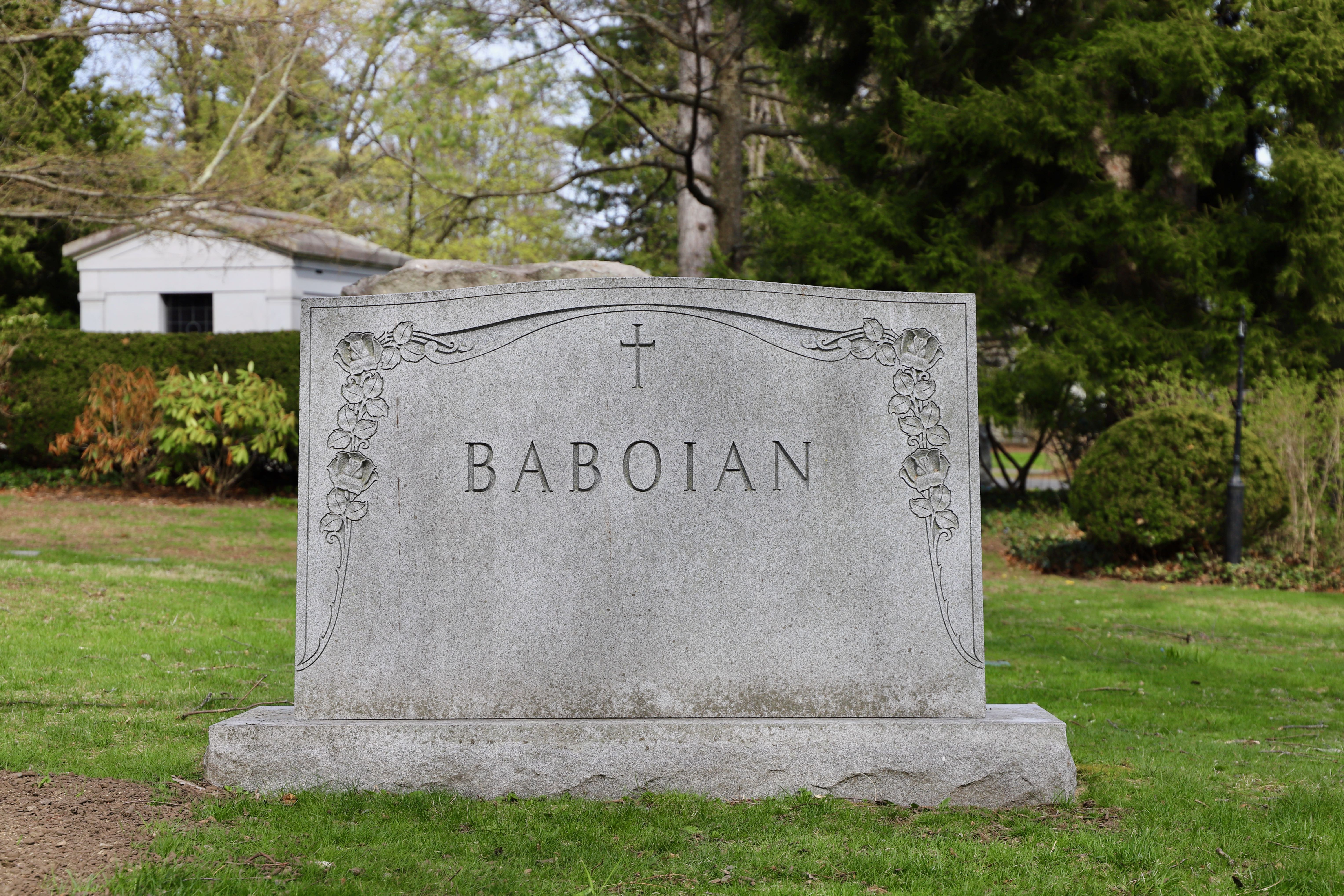
Charles Hagop Baboian (1890 – 1982)
WWI American Expeditionary Force (Purple Heart) and painter.
Buried on Orion Path in lot 6855.
Artists and Thinkers
We celebrate the creative vision and intellectual contributions of Armenian luminaries whose work has enriched both community and culture. From Rose Nazarian Baboian’s cherished cookbook that preserves ancestral flavors, to Luise Vosgerchian Pagacik’s inspired performances and scholarship at Harvard, these individuals embody the ingenuity, passion, and enduring spirit of Armenian artistry.
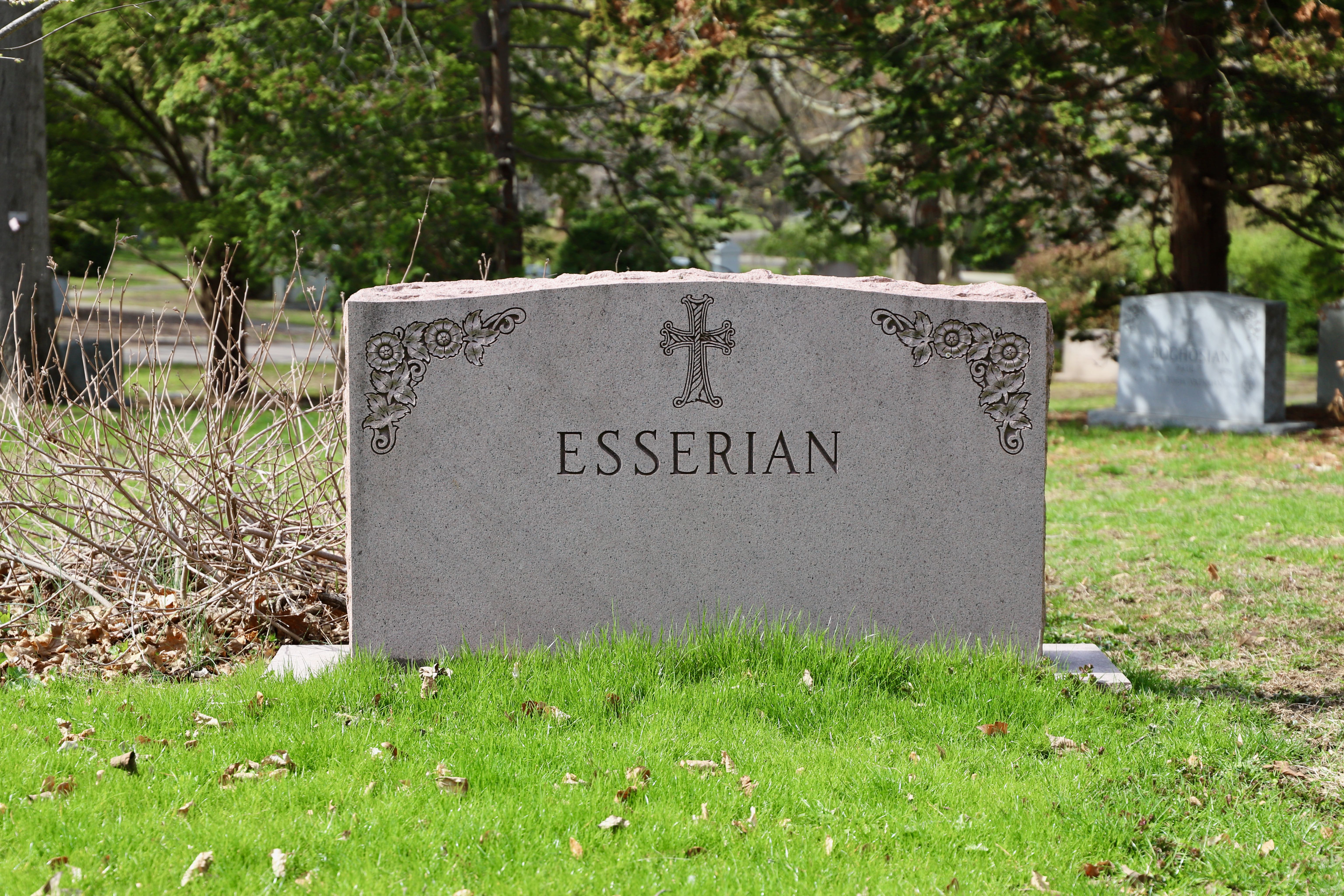
Arika Dishian Esserian (1907 – 2004)
Genocide survivor and needlepoint artist.
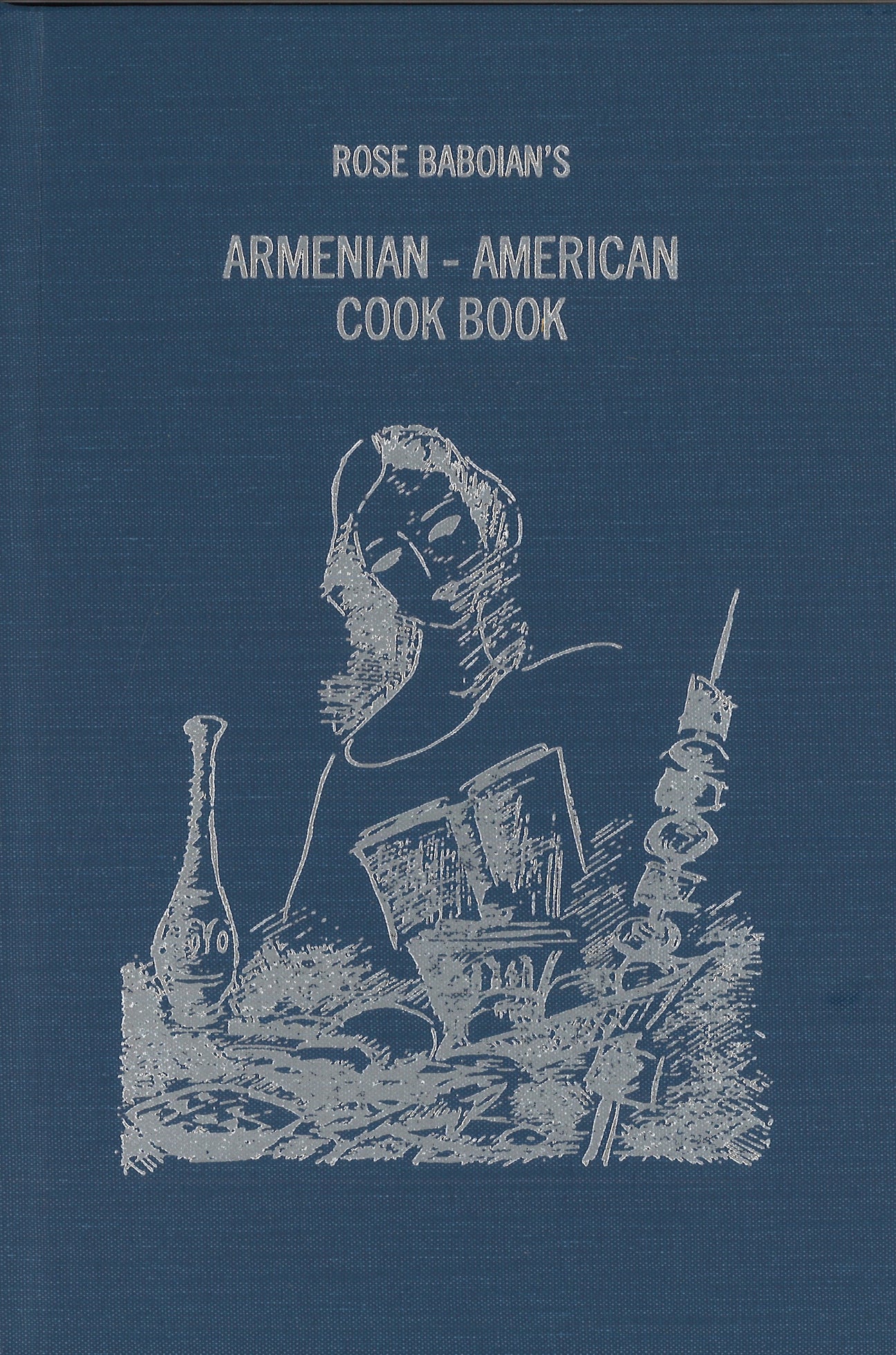
Rose Nazarian Baboian (1903 – 1969)
Author of Armenian-American Cookbook.
Buried on Orion Path in lot 6855.
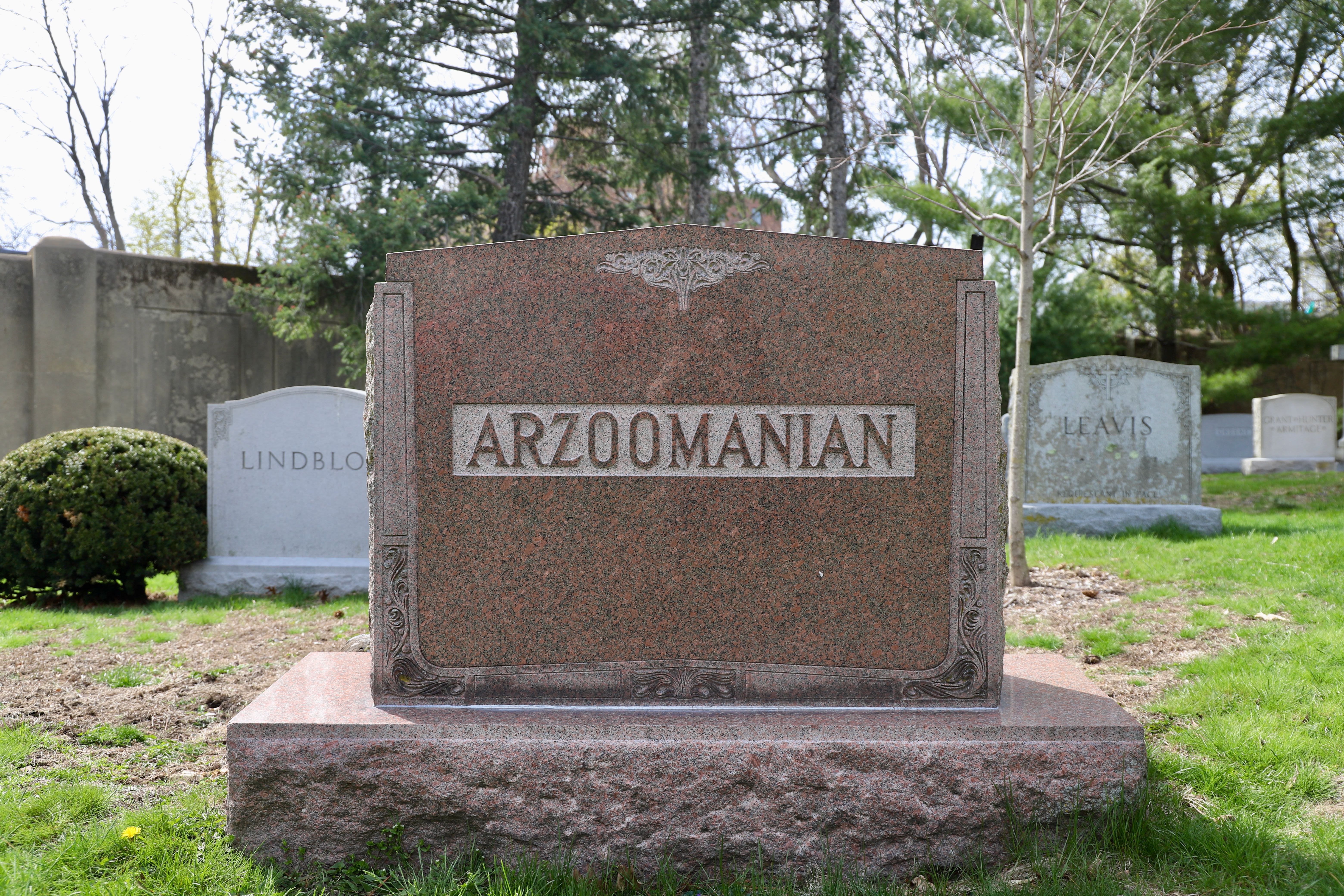
Asdour (Oscar) G. Arzoomanian (1888–1954)
Portrait photographer.
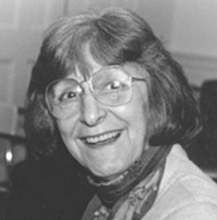
Luise Vosgerchian Pagacik (1922-2000)
Concert pianist, teacher, and Harvard professor.
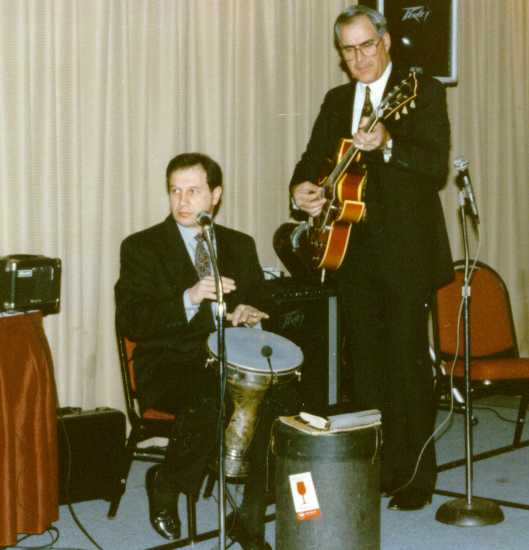
Roger J. Krikorian (1951-2007)
Singer and musician.
Buried on Aronia Path in lot 10299.
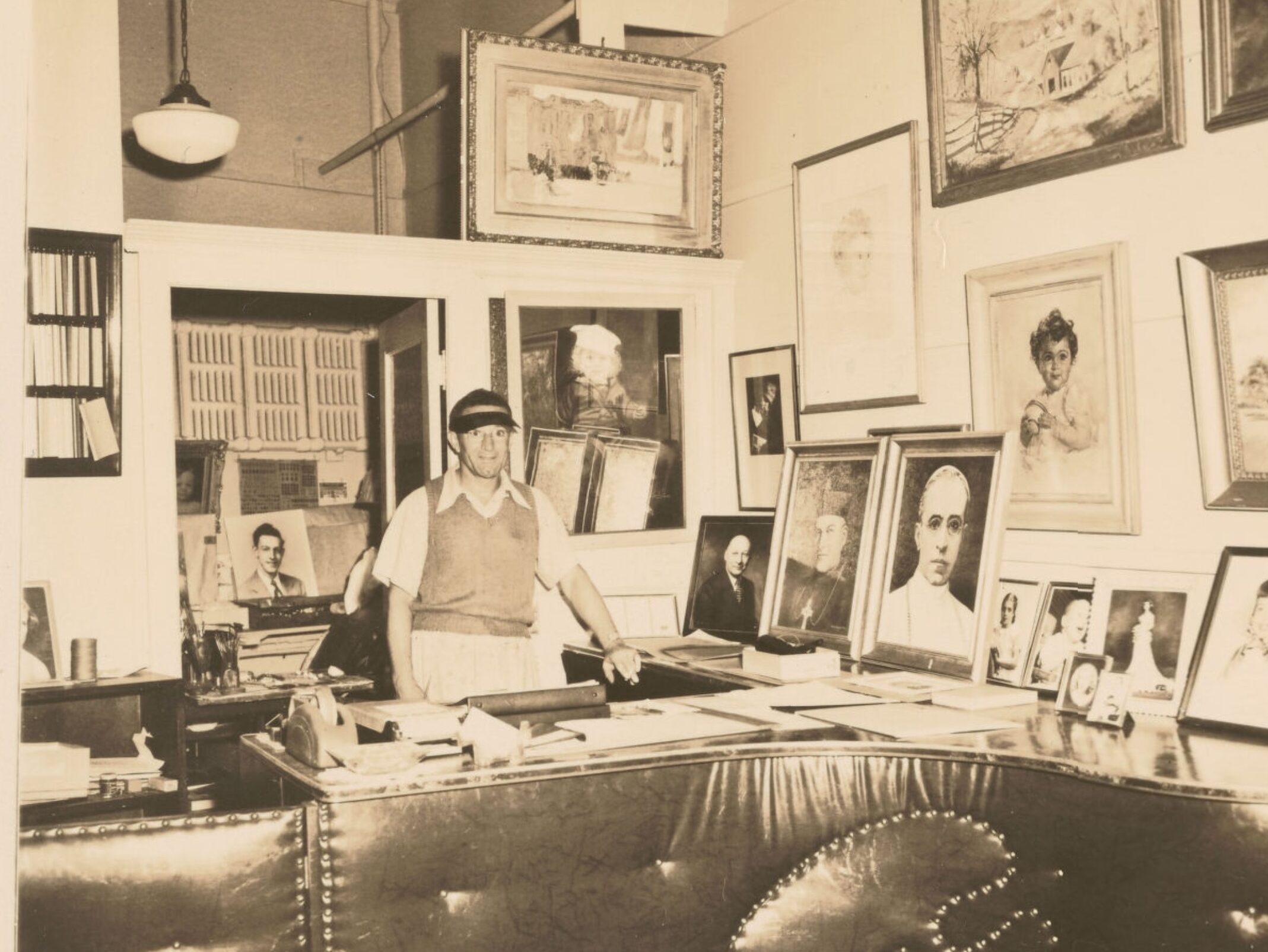
Anooshavan (Flash) Kurkjian (1912-2004)
Painter and commercial artist.
Armenian Funerary Artistry and Design
Traditional Armenian memorial stones – khachkars (Armenian for “cross-stone”) – are upright carved slabs bearing a cross and rich ornamentation. These stele were erected as memorials, grave markers, or to commemorate events, and they are unique to Armenian Christian art (en.wikipedia.org).
Typically the central feature is a cross set against a circular rosette or solar disc; the rest of the stone face is densely filled with elaborate reliefs of foliage, vines, grapes, pomegranates, angels or saints, and interlaced bands (en.wikipedia.org).
Armenian funerary stones are packed with symbolic imagery. One prominent motif is the Tree of Life, realized as sprouting vines and leaves around the cross (festival.si.edu). In many khachkars the cross is depicted as a flowering tree or vine, connecting heaven and earth. This “tree” symbolizes spiritual renewal and immortality – life emerging from death. As one study notes, khachkars are designed with “cross-tree” imagery: the cross points upward to God and heaven, while the carved vegetation represents earth and rebirth (ich.unesco.org).
After the late-19th/early-20th-century immigration waves (following events like the 1915 genocide), Armenian communities in America continued these funerary traditions as a link to home. The cross-stone became a “nostalgia”symbol for diaspora Armenians. UNESCO observes that in diaspora “khachkar is an element linking [Armenians] with their historical roots” and preserving national identity (ich.unesco.org). In practice, Armenian-American churches and cemeteries often feature memorial crosses carved in the traditional manner. Some are imported khachkars or works by Armenian craftsmen, while others are custom headstones that incorporate Armenian design.
Communities preserved the cross-stone tradition as a sacred emblem while adapting to local conditions. Whether carved in tufa stone like in Armenia or in granite by Western workshops, these monuments maintain the core symbols – cross, vine, eternity knot – that convey Armenian faith and cultural memory (ich.unesco.org).

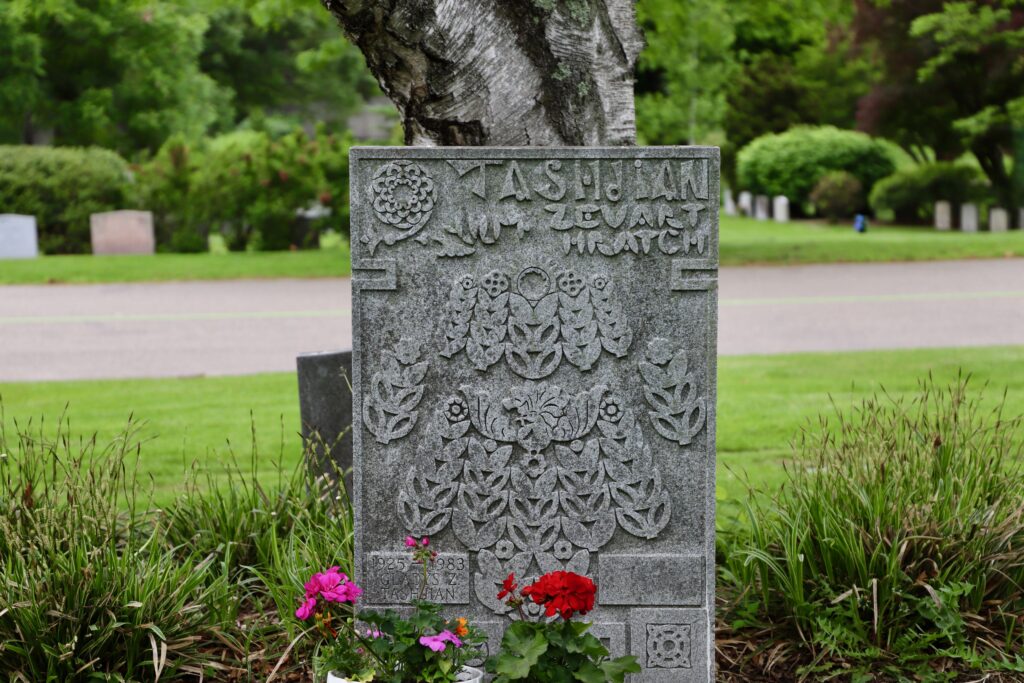
Featured Monument: Gladys Tashjian
Designed by Yervant Godjabashian | Carved in Armenia
The monument of Gladys Tashjian at Mount Auburn is a profound expression of Armenian funerary artistry, combining traditional symbolism with intimate, familial meaning. Designed by Yervant Godjabashian and carved in Armenia, the stone reflects both cultural heritage and personal legacy.
At its heart is a reimagined Armenian Tree of Life, occupying the full surface of the stone. Rooted in a simple cross at the base—representing faith and love—the tree rises to tell the story of the Tashjian family. Two flowers bloom directly from the cross, symbolizing Gladys and her husband Richard, whose shared values formed the foundation of their family. From these grow five branches, representing their three children and themselves as a unit, while the smaller flowers and leaves extending from the branches signify both grandchildren born and those yet to come.
At the top of the tree, a dove symbolizes Gladys’ purity, maternal spirit, and kindness—a tribute to the lasting warmth she brought to her family and community. Above even this, the first letter of her name appears as a radiant sun, evoking her vibrant personality and the light she shared with all who knew her.
Flanking the base of the cross are four geometric designs, arranged symmetrically. Each is constructed around the concept of “four”—symbolizing the essential elements of life: earth, water, sun, and air.
This monument is more than a marker of loss—it is a living stone of remembrance, embodying ancestral artistry, and diasporic connection. It speaks to how Armenian funerary design continues to evolve while remaining rooted in a centuries-old symbolic language of life, continuity, and the sacred.
Explore the Landscape yourself!
Research and support for this page was deeply informed by Stephen Pinkerton, Research and Visitor Services Docent, Mount Auburn Cemetery, Ruth Thomasian, Founder and CEO, Project SAVE Armenian Photograph Archives, and Marc A. Mamigonian, Director of Academic Affairs, National Association for Armenian Studies and Research (NAASR), Belmont, MA. Additional research and writing was compiled and created by Education & Digital Content Manager Corinne Elicona.
Footnotes:
Primary sources on Gladys Tashjian's monument from her descendent, Pearlene Tashjian Varjabedian.
